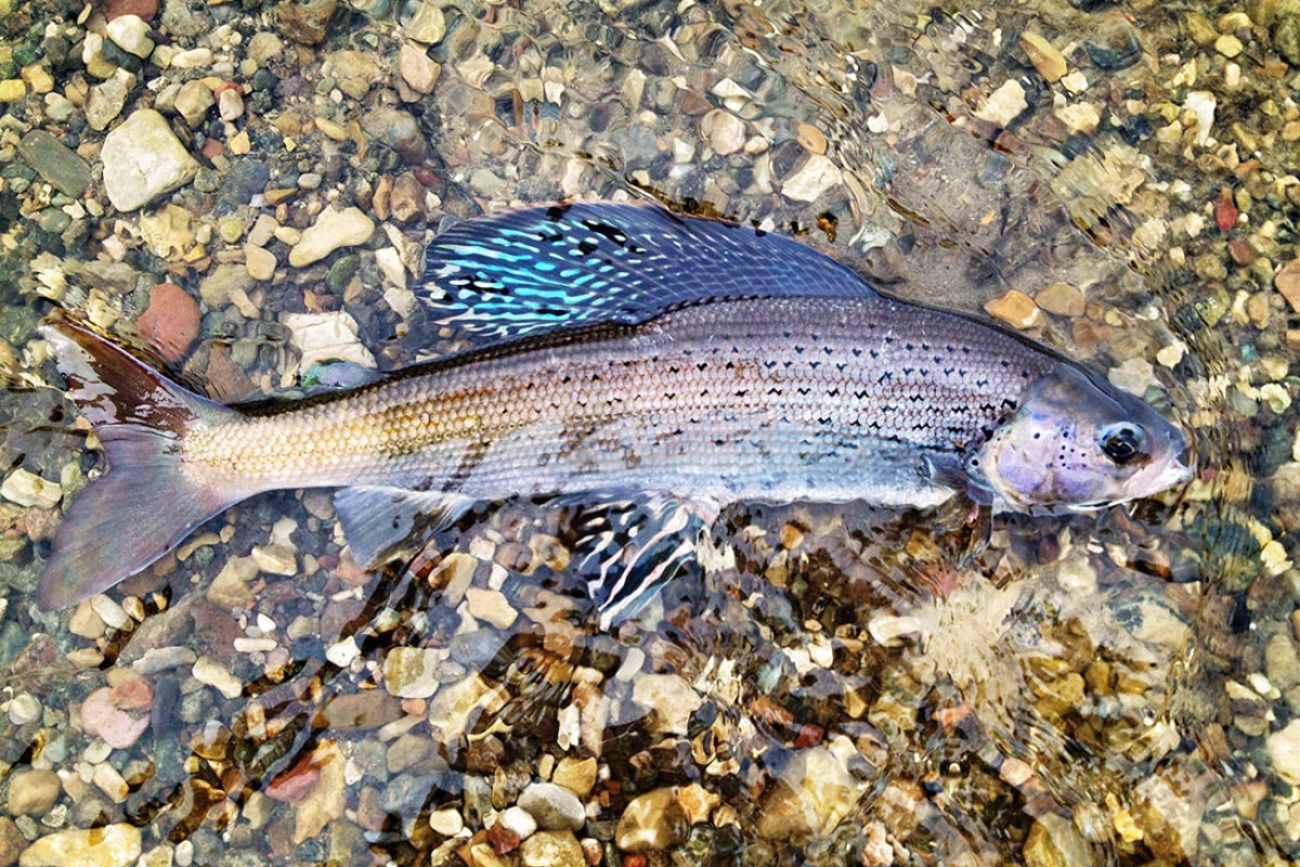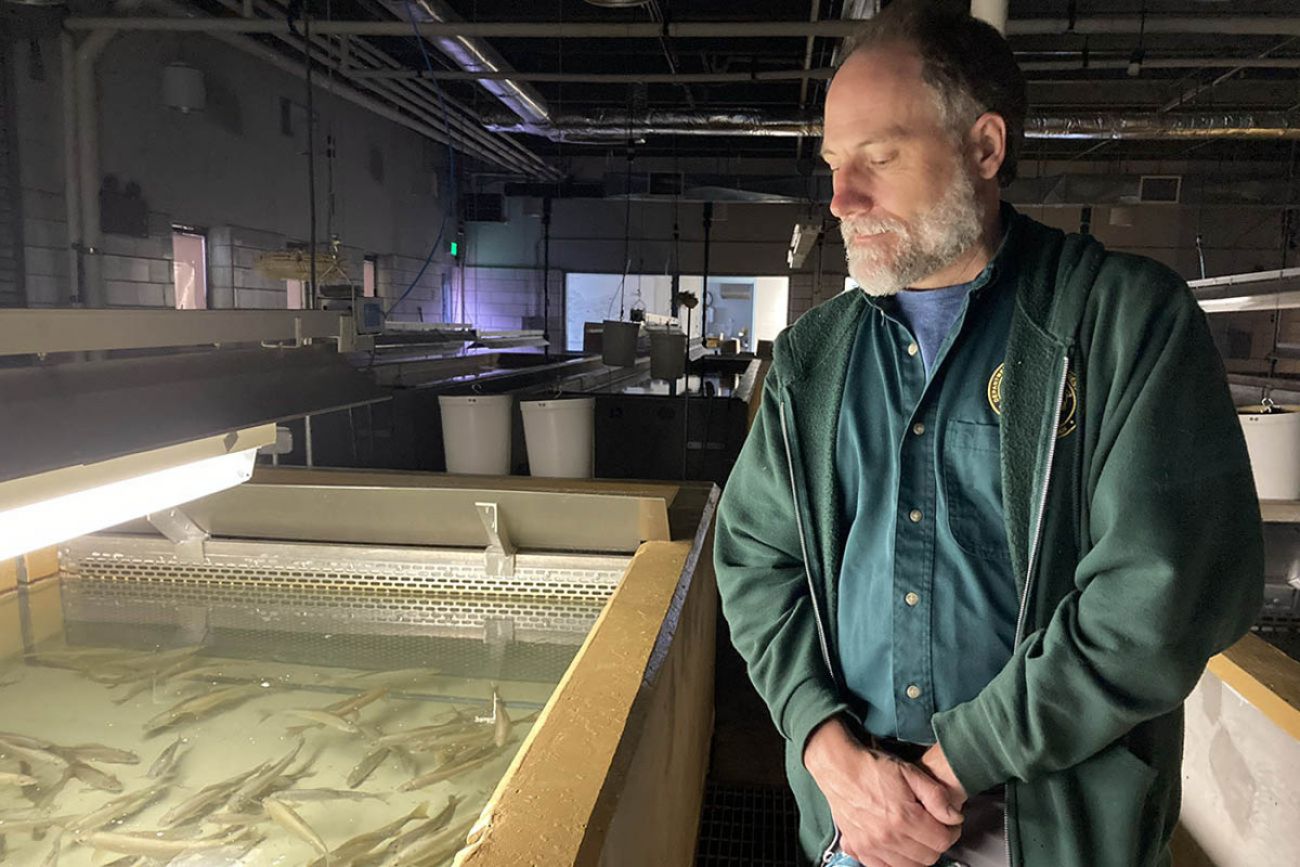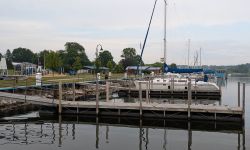Gone nearly a century, Michigan anglers can again catch Arctic grayling

- Nearly a century after they disappeared from Michigan, Arctic grayling will soon be fishable in a select few lakes
- The state will stock a few hundred fish in the U.P. as soon as this fall
- It’s part of a larger effort to create a self-sustaining population of the iconic silvery-blue fish
Michigan anglers will soon get to hook a fish that hasn’t swum wild in the state for nearly a century, after regulators on Thursday made it legal to once again catch Arctic grayling.
The Michigan Department of Natural Resources plans to stock a few hundred grayling in several Upper Peninsula lakes, making them available for catch-and-release fishing as soon as this fall.
The stocking effort comes after the Michigan Natural Resources Commission reversed a statewide ban on targeting Arctic grayling. It’s a milestone in a yearslong effort to return wild grayling to Michigan’s water, nearly a century after logging, overfishing and competition from stocked fish eradicated them in the state.
Related:
- Michigan aims to revive Arctic grayling. But first, where to put them?
- Climate change is harming Michigan hunting and fishing, groups warn lawmakers
- In warming Great Lakes, climate triage means some cold waters won’t be saved
Since 2019, the Department of Natural Resources has been raising Alaskan grayling in Michigan hatcheries, with plans to use their eggs to seed wild populations in Michigan rivers.
But the DNR raised more fish than necessary, an insurance policy against potential disease outbreaks in the Marquette State Fish Hatchery’s close quarters, said Jay Wesley, Lake Michigan basin coordinator for the DNR fisheries division.
Wesley said the oldest fish, now up to 15 inches in size, are “basically outgrowing the space.” Stocking the extras in U.P. lakes “is an opportunity to get people excited” about the larger reintroduction effort.
Known for their silvery-blue scales and large dorsal fin, Arctic grayling were once abundant in Michigan’s northern Lower Peninsula. But logging, overfishing, and competition from non-native trout took a toll, and the fish vanished from Michigan by 1936.
Wild populations remain in Canada, Alaska and Montana. The fish are aggressive biters and strong fighters when hooked, making them a popular sport fish.
Wesley said DNR staff have approval to stock the fish in lakes Penegor and Perrault in Houghton County. Three other U.P. lakes are under consideration.
The fishing opportunity will be catch-and-release, meaning anglers won’t be allowed to keep the fish. That doesn’t appear to be dimming excitement among U.P. anglers.
“It’s an opportunity for people to get out and catch something they’ve never caught before, without having to travel halfway across the world to find it,” said Joe Hansen, who leads the South Shore Fishing Association in Marquette.
Because grayling are natural river-spawners, they aren’t expected to reproduce in the lakes, said Ed Eisch, the DNR’s fish production manager. That’s by design: The DNR still hasn’t decided where it wants grayling to thrive in Michigan long-term.
The oldest hatchery broodstock are nearing adulthood, and could reproduce as soon as 2025. The DNR hopes to use their fertilized eggs to create a self-sustaining population of wild Arctic grayling in Michigan rivers.
DNR officials are still deciding where they hope to seed a permanent population. They’re considering the Upper Manistee, Boardman, Jordan, Maple and Au Sable, five watersheds north of M-55.
Arctic grayling require cold, clear water free with abundant shade, ample habitat and limited competition from non-native fish species like brown trout that now dominate northern Michigan’s rivers.
Previous reintroduction attempts in Michigan have failed. But scientists believe this time will be different, thanks to new techniques and a better understanding of what the fish need to survive.
Rather than transplanting young hatchery-reared fish into rivers, scientists plan to hatch grayling eggs directly into the streams where they’ll live, allowing them to develop an instinctual memory of the birthstream where they’ll eventually return to spawn.

It will take several more years to know whether the reintroduction worked. Success will depend upon the fish surviving to adulthood and then reproducing in the wild.
As for how long it could be before anglers can catch wild grayling in Michigan’s rivers?
“It’s quite a ways down the road,” Eisch said.
While widely celebrated by Native American tribes and public natural resources managers, the grayling revival effort is more divisive among recreational anglers. Some celebrate the chance to revive a native fish, while others worry that efforts to protect Arctic grayling will siphon resources away from popular sportfish such as trout and salmon.
“It's exciting to have these Arctic grayling coming here, from my perspective as a fisherman,” said Mike Koziara, a fishing guide in Marquette. “But it's also really tough because there's a lot of folks who would rather see what they enjoy catching most.”
Michigan Environment Watch
Michigan Environment Watch examines how public policy, industry, and other factors interact with the state’s trove of natural resources.
- See full coverage
- Subscribe
- Share tips and questions with Bridge environment reporter Kelly House
Michigan Environment Watch is made possible by generous financial support from:
Our generous Environment Watch underwriters encourage Bridge Michigan readers to also support civic journalism by becoming Bridge members. Please consider joining today.
See what new members are saying about why they donated to Bridge Michigan:
- “In order for this information to be accurate and unbiased it must be underwritten by its readers, not by special interests.” - Larry S.
- “Not many other media sources report on the topics Bridge does.” - Susan B.
- “Your journalism is outstanding and rare these days.” - Mark S.
If you want to ensure the future of nonpartisan, nonprofit Michigan journalism, please become a member today. You, too, will be asked why you donated and maybe we'll feature your quote next time!






